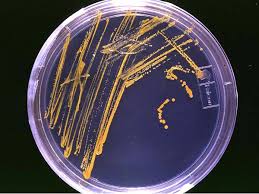Introduction to Culture Media

In microbiology, the growth of microorganisms (like bacteria, fungi, or viruses) often requires special solutions or mixtures called culture media. These media provide the nutrients and environment the microorganisms need to thrive. Each type of media is designed for different purposes, such as promoting growth, helping in the identification of microorganisms, or supporting specific metabolic reactions.
Let’s break down three common types of media: glucose broth, glucose phosphate peptone water, and glycerol broth. Each of these media has its own composition and serves specific roles in microbiology.
Table of Contents
Glucose Broth

Glucose broth is one of the simplest forms of Culture media. As the name suggests, its main ingredient is glucose (a type of sugar). Glucose is an essential nutrient for many microorganisms because it serves as a primary source of energy. In this broth, microorganisms break down the glucose through various metabolic processes, helping them grow and multiply.
Components
Glucose: A sugar that microorganisms use as food or energy.
Water: The base liquid in which glucose and other ingredients dissolve.
Sometimes, glucose broth may also contain:
Peptone: This is a source of protein, made from partially digested proteins. It provides amino acids and nitrogen that help microorganisms grow.
Salts: These can maintain the right balance for microorganisms and support their metabolism.
Usage
Glucose broth is often used to study how microorganisms ferment glucose. For example, it helps scientists understand if a certain bacteria can break down glucose, and how it produces by-products like acids, gases, or alcohol. The changes in the broth (such as acid formation or gas bubbles) can indicate specific metabolic activities.
Glucose Phosphate Peptone Water
Glucose phosphate peptone water is a more complex type of culture media. It is designed to support a broader range of microorganisms or to study specific metabolic reactions in detail. This medium contains not only glucose and peptone but also phosphate.
Components
Glucose: Like in glucose broth, it serves as the energy source.
Peptone: A protein source that provides nitrogen and amino acids.
Phosphate (buffer): This is a chemical that helps maintain a stable pH level in the medium. Microorganisms produce acids during fermentation, which can lower the pH of the medium. The phosphate buffer prevents the environment from becoming too acidic, which could harm the microorganisms or stop their growth.
Usage
This medium is helpful when scientists need to observe how microorganisms ferment glucose while controlling pH levels. Since the pH remains more stable, it is easier to observe specific metabolic reactions without worrying about the acidity affecting results.
It is often used to study bacteria that ferment sugars but need a controlled environment to grow optimally.
Glycerol Broth

Glycerol broth uses glycerol as the main carbon source instead of glucose. Glycerol is a sugar alcohol that microorganisms can also use as energy, but it is metabolized differently than glucose. It is another types of culture media.
Components
Glycerol: A sugar alcohol that provides carbon and energy.
Peptone: Just like in the other broths, this provides a source of protein, nitrogen, and amino acids.
Water: The liquid base for dissolving all the ingredients.
Glycerol is a versatile molecule because it can support the growth of a wide range of bacteria, including some that do not thrive on glucose alone. This medium is particularly useful for cultivating Mycobacterium species, which includes the bacteria responsible for tuberculosis.
Usage
Glycerol broth is used for growing microorganisms that prefer glycerol as their carbon source or that cannot easily metabolize glucose.
It is especially important in medical microbiology when growing or isolating pathogens like Mycobacterium tuberculosis (the bacteria that causes tuberculosis).
It is also used for maintaining bacterial cultures over time, as glycerol helps stabilize the microorganisms and prevents them from dying out as quickly.
Practical Applications
These three media types are widely used in microbiology research, clinical diagnostics, and industrial applications. For example:
In clinical microbiology, these media help in the isolation and identification of pathogens. Scientists can test how different bacteria ferment sugars, helping to identify the bacteria in samples from patients. For example, E. coli or Klebsiella species can be distinguished by their fermentation patterns.
In industrial microbiology, these broths can be used for fermentation processes, where bacteria or yeast are grown to produce products like alcohol, antibiotics, or enzymes. The type of medium chosen will depend on the organism and the desired product.
In research laboratories, glucose or glycerol broths help in studying metabolic pathways. Researchers can use these media to observe how microorganisms convert sugars into energy and by-products, contributing to the development of new biotechnological methods or drugs.
Conclusion
In summary, glucose broth, glucose phosphate peptone water, and glycerol broth are crucial tools in microbiology for growing and studying microorganisms. Glucose broth provides a simple environment for studying fermentation, while glucose phosphate peptone water adds pH stability for more controlled studies. Glycerol broth, on the other hand, is designed for microorganisms that prefer or require glycerol, such as Mycobacterium tuberculosis. Each of these media types has specific uses, making them valuable in clinical, industrial, and research settings.
Frequently Asked Questions (FAQ)
Define Culture media?
Culture media is a gel or liquid that contains nutrients and is used to grow bacteria or microorganisms. Culture media are also termed growth media. Different cell types are grown in various types of medium. Nutrient broths and agar plates are the most typical growth media for microorganisms.
What are the types of Culture media?
The types of culture media are Glucose broth, glucose phosphate peptone water and Glycerol broth.
Related Articles




